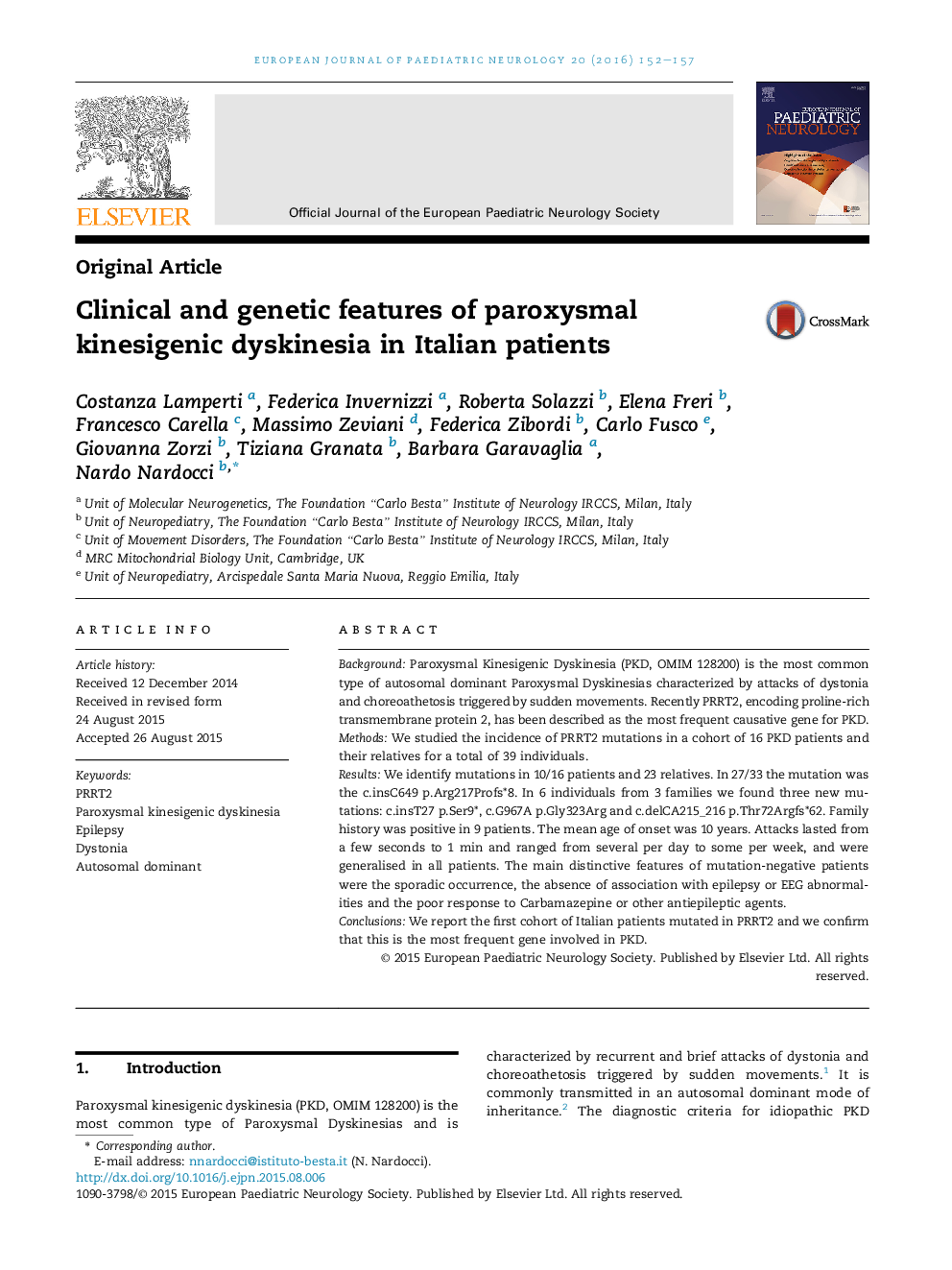| Article ID | Journal | Published Year | Pages | File Type |
|---|---|---|---|---|
| 3053670 | European Journal of Paediatric Neurology | 2016 | 6 Pages |
•Recently PRRT2, has been described as the most frequent causative gene for PKD.•We studied the incidence of PRRT2 mutations in a cohort of 16 PKD patients and their relatives for a total of 39 individuals.•We identify mutations in 10/16 patients and 23 relatives.•In 6 individuals we found three new mutations:c.insT27 p.Ser9*, c.G967A p.Gly323Arg and c.delCA215_216 p.Thr72Argfs*62.•The distinctive features of negative patients were: sporadic occurrence, no epilepsy and the poor response to therapy.
BackgroundParoxysmal Kinesigenic Dyskinesia (PKD, OMIM 128200) is the most common type of autosomal dominant Paroxysmal Dyskinesias characterized by attacks of dystonia and choreoathetosis triggered by sudden movements. Recently PRRT2, encoding proline-rich transmembrane protein 2, has been described as the most frequent causative gene for PKD.MethodsWe studied the incidence of PRRT2 mutations in a cohort of 16 PKD patients and their relatives for a total of 39 individuals.ResultsWe identify mutations in 10/16 patients and 23 relatives. In 27/33 the mutation was the c.insC649 p.Arg217Profs*8. In 6 individuals from 3 families we found three new mutations: c.insT27 p.Ser9*, c.G967A p.Gly323Arg and c.delCA215_216 p.Thr72Argfs*62. Family history was positive in 9 patients. The mean age of onset was 10 years. Attacks lasted from a few seconds to 1 min and ranged from several per day to some per week, and were generalised in all patients. The main distinctive features of mutation-negative patients were the sporadic occurrence, the absence of association with epilepsy or EEG abnormalities and the poor response to Carbamazepine or other antiepileptic agents.ConclusionsWe report the first cohort of Italian patients mutated in PRRT2 and we confirm that this is the most frequent gene involved in PKD.
